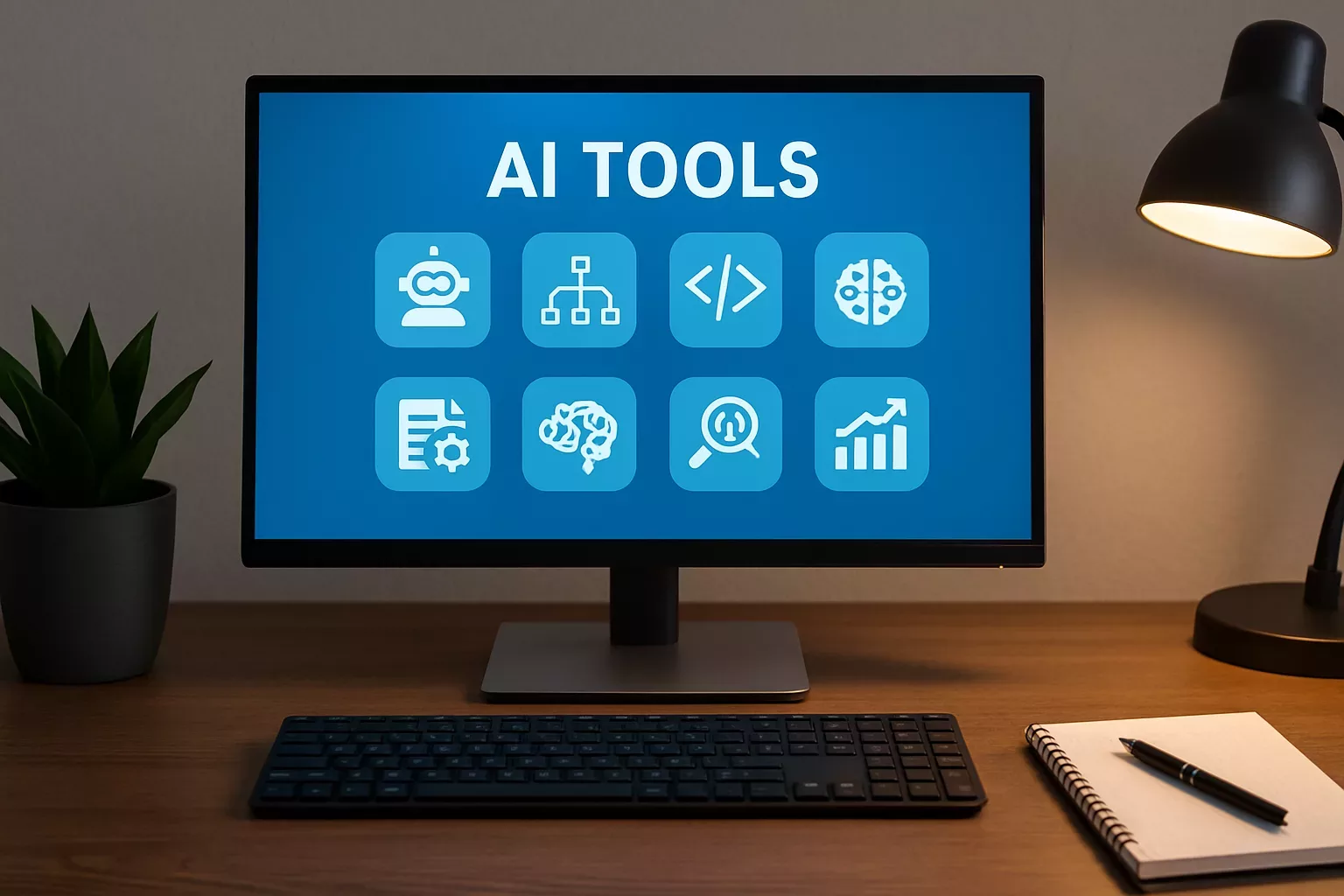AI Tools That Bring Everyday Benefits
 AI isn’t just for tech pros and big businesses anymore. It’s worked its way into things you probably do every day, like sending emails, organizing your schedule, making shopping lists, or even sprucing up the photos on your phone. I’ve picked out ten AI tools that fit perfectly into daily routines, and the good news is, no advanced tech skills needed. Whether you want to save time, get more done, or just try something new, there’s probably an AI tool that’ll come in handy. These tools are all about making life easier and fitting smoothly into your routine, no matter your experience level.
AI isn’t just for tech pros and big businesses anymore. It’s worked its way into things you probably do every day, like sending emails, organizing your schedule, making shopping lists, or even sprucing up the photos on your phone. I’ve picked out ten AI tools that fit perfectly into daily routines, and the good news is, no advanced tech skills needed. Whether you want to save time, get more done, or just try something new, there’s probably an AI tool that’ll come in handy. These tools are all about making life easier and fitting smoothly into your routine, no matter your experience level.
Why Everyday AI Tools Matter
When people hear about artificial intelligence, it sounds big and maybe a bit intimidating. Here’s the thing, many of the best AI tools for everyday use are super easy to set up and learn. They help you work smarter, not harder, and they’re often free or budget friendly. Plus, you don’t need any special equipment; most run right on your favorite app or browser. When you try out these practical AI tools, you might be surprised at how fast they can take up a notch your organization and productivity without the frustration of a steep learning curve.
The Top Ten AI Tools for Daily Tasks
1. ChatGPT (OpenAI)
ChatGPT helps with everything from drafting emails to brainstorming gift ideas. I use it to double-check grammar, rewrite tricky sentences, and even map out weekly meal plans. Just type in your question or request, and it replies in plain language with ideas you can use right away. You can also put it to work for research, explanations, or more creative tasks like generating stories or poems. Its adaptive style means it feels like chatting with someone who gets the vibe you’re going for.
2. Grammarly
Grammarly catches typos, awkward phrases, and helps polish up messages, posts, or documents. It pops up right in your browser or email app, nudging you when a sentence could be clearer. I find it especially useful for catching small mistakes before hitting “send.” Plus, it suggests better vocabulary and flags tones that might not hit the mark for your audience. Over time, you’ll probably notice your writing getting sharper.
3. Otter.ai
Otter takes the pain out of note-taking by automatically transcribing conversations and meetings in real time. You can use it for classes, interviews, or even grocery lists dictated on the fly. The transcripts are searchable and easy to share with others. Features like highlighting and adding images or comments to transcripts mean you can really get the most out of your notes.
4. Notion AI
Notion’s allinone workspace is even more powerful when you add Notion AI. It can summarize meeting notes, create to-do lists, draft blog posts, or break down big projects into smaller steps. It saves a ton of time if you like keeping work and life plans in one place and is especially helpful for collaborating with others. Try using it to create databases or track goals for even greater productivity.
5. Google Photos (AI Organization)
Google Photos uses AI to sort your photos by place, face, or even activities. The search function is eye-catching; just type “picnic” or “snow” and it brings up relevant snaps instantly. Editing tools, powered by AI, help fix lighting or remove clutter in a couple of taps. Organizing and backing up photos requires almost no effort, so you can stumble upon memories without hunting for ages.
6. Microsoft Copilot
Microsoft Copilot works inside Word, Excel, Outlook, and PowerPoint, turning basic suggestions into full documents or insightful summaries. I use it for drafting meeting recaps and organizing task lists, and it’s surprisingly easy to get the hang of if you use Office apps often. It can even pull out key points from long emails and create visual charts, which is handy during busy weeks.
7. Canva AI
Canva’s AIpowered features are a lifesaver for quick design jobs, like creating social posts, flyers, or even personal invitations. The Magic Design tool suggests layouts and styles with just a description. No graphic design skills needed, and results look really polished. If you need to churn out graphics quickly, it seriously gives your projects a boost and takes the stress out of the creative process.
8. Reclaim.ai
Reclaim.ai looks at your calendar and automatically finds time for important habits or tasks, like exercise or deepfocus work. It’s great if you struggle to block out time for priorities, and it adjusts on the fly if meetings pop up. I use it to protect time for lunch breaks or errands that tend to slip through the cracks. Syncing it with your other calendars is easy, keeping your commitments lined up.
9. Otio (Smart To-Do Lists)
Otio is a task list app that uses AI to help you plan out what to tackle next based on how urgent or important your todos are. It learns from your habits and adjusts recommendations, so you don’t have to constantly rearrange your list. It’s like having a personal assistant for your chores. If you like seeing daily, weekly, and longterm goals all in one spot—this tool has you covered.
10. DeepL Translate
DeepL offers fast, accurate translation for dozens of languages, and it sounds much more natural than most online translators. It’s perfect when you’re traveling, working with people from other countries, or just want to double-check the meaning of a phrase. The ability to translate full documents or messages quickly is a definite time-saver.
How to Choose the Right AI Tool for You
With so many options, it’s easy to get overwhelmed. I stick to a few questions before trying something new: Does it solve a problem I actually have? Will it link up with the apps I already use? And is it free or is there a trial version? Starting with a tool that covers a small but annoying task is a good way to see just how helpful AI can be. Reading reviews and checking for updates can also help you track down the best fit for your needs. Remember, everyone’s workflow is different, and the perfect tool for you might not be what your friends swear by.
Getting Started with AI in Everyday Life
You don’t have to use every tool on this list to get real benefits. Even picking one or two can make your day run smoother or free up more time for things you like. The best part is, these tools are updated regularly and often get better over time, so it’s always worth checking back if you want to see what’s new or improved. If you ever feel stuck, plenty of tutorials and user forums can help you get a feel for how each app works. Don’t be afraid to experiment a little; sometimes, the right AI tool just needs a test drive to show you how much it can do.
Questions People Ask About Everyday AI Tools
Are AI tools safe to use? As long as you stick to reputable brands and check privacy policies, most AI tools are secure for everyday stuff. Still, I always watch what information I give them, especially with private data.
Will these tools work on my phone? Most now have mobile apps or work on web browsers, making it easy to access features anywhere. I use several right from my laptop and phone, switching back and forth as needed.
Do I need to pay for these tools? Many have free plans that are great for starters. You might run into limits on features if you use them a lot, but you can always test them before deciding if it’s worth upgrading.
Can AI tools make mistakes? Absolutely. While these tools are smart and helpful, they’re not perfect. Sometimes they misunderstand context, or typos can sneak in, so it’s good to double-check important info before relying on the results. Over time, you’ll get a sense of how each app works best for you.
Staying Ahead with AI Tools
Adding a little AI to your daily routine can mean less stress and more time for fun or work that matters. There’s no “one size fits all,” but a bit of experimenting will help you find what zones in on your needs. Trying out some of these top AI apps is a quick way to see how far everyday tech has come. With a flexible attitude and some curiosity, it’s easy to bring a bit of AI magic into your day and keep up with what’s possible.
